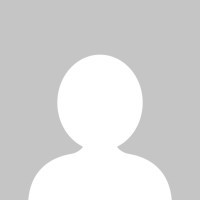It is common to see cats and dogs living together in the same household. Typically, cats are viewed as the more fragile and delicate of the two species, so it can be surprising when a dog decides to sit on a cat. This unusual interaction can be amusing to watch, but it’s important to understand how cats react in such situations and the reasons behind their behavior. You can observe the cats’ reactions to being sat on by a dog.
Table of Contents
Watch Cats Reaction to Being Sat on by Dog
Cats Reaction to Being Sat on by Dog
When a dog decides to sit on a cat, the cat’s reaction ranges from confusion to annoyance. Most cats will freeze in place, feeling confused and perplexed as to why the dog is sitting on them. Some cats may hiss or growl due to fear or annoyance. It’s important to observe the cat’s behavior and facial expressions, as they provide clues about how the cat is feeling.
Also read: NCR Days (Web Series) Cast, Wiki, Storyline, and more
Dog’s Perspective on Cats
From a dog’s perspective, cats can be a source of warmth and comfort. Dogs may also view cats as potential playmates, often trying to sit on them to show affection. It is important to remember that dogs do not understand the concept of personal space, so it’s essential to intervene if a dog sits on a cat for too long.
Reasons for Cats’ Resentment
Cats may resent being sat on for several reasons. First, they are territorial creatures and might feel threatened by a dog’s presence. Second, they can be uncomfortable with physical contact and may dislike the feeling of being restrained. Third, they may be annoyed by the dog’s lack of respect for their personal space.
In conclusion, it is important to understand the dynamics between cats and dogs and how cats react to being sat on. It is important to observe the cat’s behavior and facial expressions to ensure that the cat is not being harmed or distressed. Additionally, it is important to understand why cats may resent being sat on and intervene if necessary.
The Cats Reaction to Being Sat on by Dog can vary widely depending on the individual animals involved, Cats and dogs can react differently to each other’s presence based on their personalities and previous interactions. Here are a few potential scenarios:
- Territorial Aggression:
- Some cats are territorial and may react defensively if a dog encroaches on their space. If a dog sits on a cat, the cat may hiss, growl, or swat at the dog to communicate discomfort or a desire for space.
- Fear or Stress:
- Cats are generally more sensitive to changes in their environment or unexpected interactions. Being sat on by a dog, especially if the cat is not used to canine companionship, may cause fear or stress. The cat might react by trying to escape or hiding.
- Indifference:
- In some cases, cats and dogs that have a positive relationship and are used to each other’s presence may react indifferently. The cat may simply move away without showing signs of distress if it’s comfortable with the dog.
- Submission or Playfulness:
- Cats and dogs that have a playful and social relationship may exhibit more relaxed behaviors. The cat might tolerate being sat on as a form of play or social interaction, especially if they have a positive history of playing together.
- Individual Personality:
- Each cat and dog has its own unique personality. Some cats are more laid-back and tolerant, while others may be more assertive or reserved. Similarly, dogs have different temperaments. The reaction depends on the individual characteristics of each animal.
- Previous Interactions:
- 3. **Indifference**: In some cases, cats and dogs that share a positive relationship and are familiar with each other’s presence may react indifferently. If the cat feels comfortable with the dog, it may simply move away without showing any signs of distress.
Pet owners must closely monitor their animals and ensure their safety. If a cat consistently shows signs of stress or fear around a dog, it’s essential to provide a safe space where the cat can retreat. Using positive reinforcement and introducing the animals gradually can help foster a harmonious relationship between them.
Always pay attention to the body language of both animals. If the cat appears distressed or the dog is displaying behaviors that may lead to conflict, intervene to prevent any potential harm. Understanding and respecting the individual needs and boundaries of each pet can contribute to a more peaceful coexistence.




















